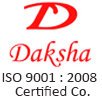What is Pneumatic Peening Process?
Pneumatic peening involves using compressed air to propel any shot media with the help of a nozzle in the direction of the metal part to be peened. Shot media could include spherical cast steel, conditioned cut wire, glass beads, or ceramic beads. Air nozzle peening is generally selected over wheel type peening (which uses a rotating, centrifugal wheel to propel shot) when the direction of the media must be more accurately focused. Frequently, multi-nozzle setups are utilized to shot peen complex parts that have more surface area than one nozzle can cover
The velocity of the shot determines the energy of the shot stream and is adjusted by modifying air pressure and nozzle settings. The Almen strip system is an important part of the controls which establish the repeatability of the shot peening process which is expected in today’s equipment.
What are the advantages of Pneumatic Peening?
- Enhances fatigue strength
- Improves ultimate strength
- Prevents cracking due to wear
- Prevents hydrogen embrittlement
- Can permit the use of very hard steels by reducing brittleness
What are the applications of Pneumatic Peening?
Pneumatic Shot Peening is used on gear parts, cams and camshafts, clutch springs, coil springs, connecting rods, crankshafts, gearwheels, leaf and suspension springs, rock drills, and turbine blades. It is also used in foundries for sand removal, decoring, descaling, and surface finishing of castings such as engine blocks and cylinder heads. Its descaling action can be used in the manufacturing of steel products such as strip, plates, sheets, wire, and bar stock.
We Do Pneumatic Peening of
- Gears
- Drive Shafts
- Crank Shafts
- Compression Springs
- Tank Shafts
- Stem
- Knobs
- Propeller Blades

